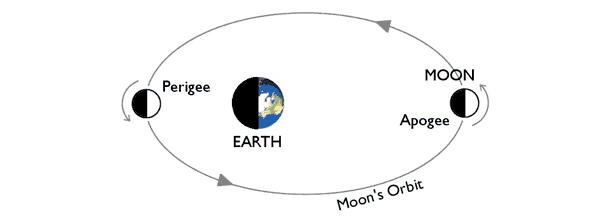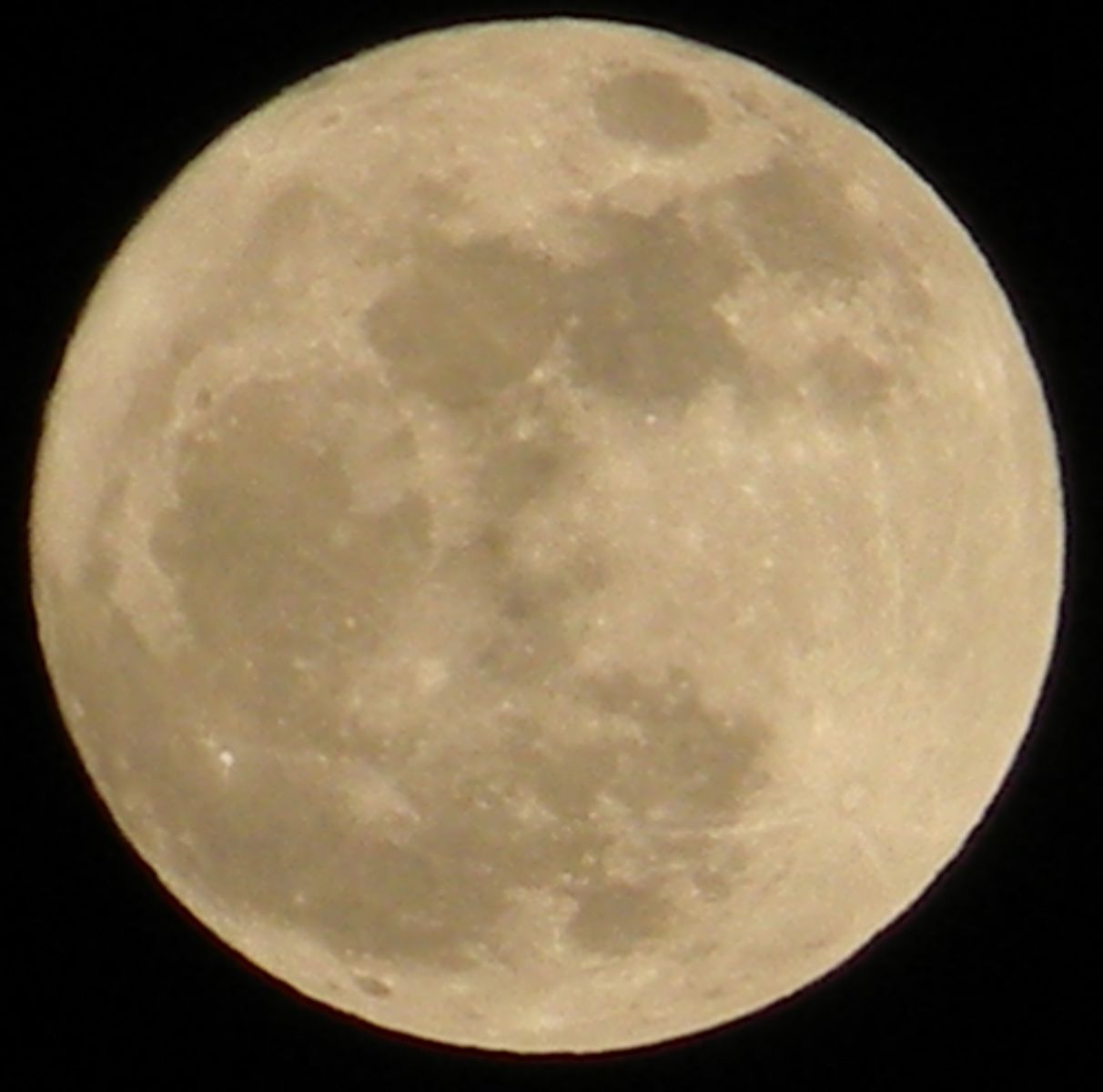The most spectacular supermoon of the year – June 23, 2013

On June 23, 2013 we will experience a truly super supermoon. The full moon that falls on June 23, 2013 at 11:32 UTC, will not only be the closest to Earth for the year, but it will also appear the biggest full moon for 2013. It will also be about 30 percent brighter than an average full moon. Last supermoon was on May 24, 2013. And in 2011, we witnessed the moon's closest approach in 19 years.
Moon`s elliptical orbit is the main reason for the increase in its apparent size. About 50,000 km is the difference between the Moon`s apogee (it`s furthest point to Earth) and it`s perigee (it`s closest point to Earth).

Apogee is the farthest point from the earth.Perigee is the closest point to the earth and it is in this stage that the moon appears larger. Looking at the moon in the sky without anything to compare it to, you wouldn't notice any size difference. But the difference in size can in fact be quite significant. (Credit: Newton High School)
The apogee and perigee of the moon have an effect on the tides here on Earth. When the moon is at apogee, the furthest distance from the Earth, it has less gravitational pull which, along with other factors that influence the tides, can contribute to lower tides or lower variation in the high/low tide level. When the moon is at perigee, closer to the Earth, there is much more gravitational pull which contributes to the opposite effect: higher tides or greater variation in the high and low tide.
The supermoon of June 2013 will be extra special, as the full moon coincides with it`s closest approach to our planet for 2013, at a distance of 356,991 km. Next time this event will occur is August 2014. It is also worth mentioning that between June 22 and June 25, 2013 the occurrence of "King tides" is expected.
The "King tides" occur when the Earth, moon and sun are aligned at perigee and perihelion, resulting in the largest tidal range seen over the course of a year. "King tide" is not a scientific term, rather this term originated in Australia, New Zealand and other Pacific nations to refer to an extraordinary high tide that happens only few times a year.

Supermoon on March 19, 2011 (Credit: Peter2006son)
Supermoon
Supermoon happens when the moon is slightly closer to Earth in its orbit than on average, and when it occurs at the same time as a full moon. That's why the moon may seem bigger although the difference in its distance from Earth is only a few percent at such times.
According to David Morrison, from NASA, “supermoon” is not an astronomical term and it has no effect on Earth, the change in size is hardly noticeable to the average person.
Source: EarthSky, NightSkyOnline, Wikipedia
Featured image: Supermoon (Credit: ecorazzi/CC)

Commenting rules and guidelines
We value the thoughts and opinions of our readers and welcome healthy discussions on our website. In order to maintain a respectful and positive community, we ask that all commenters follow these rules:
We reserve the right to remove any comments that violate these rules. By commenting on our website, you agree to abide by these guidelines. Thank you for helping to create a positive and welcoming environment for all.